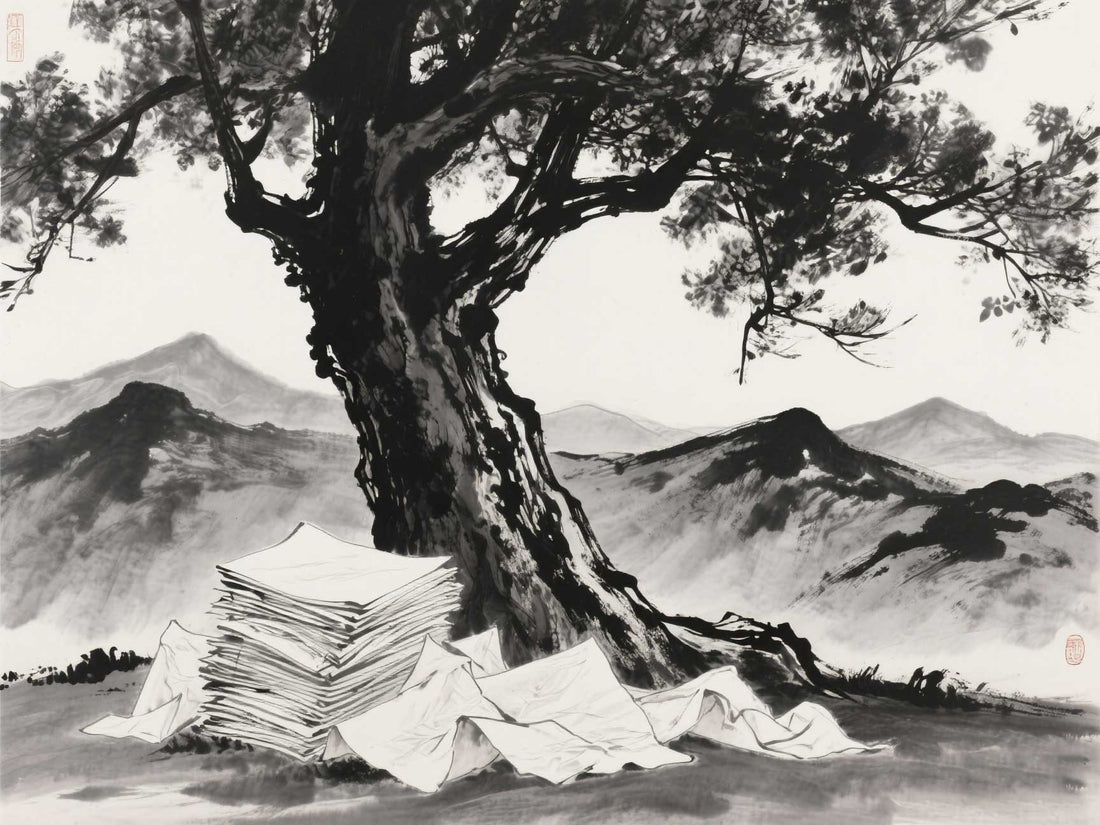
How is Xuan paper made?
Share
1. Preparation of core raw materials
-
Pteris serrata bark (core fiber source)
- Harvesting : Select 2-3 year old Phellodendron branches and cut them in winter to obtain the best fiber.
- Processing : After steaming and softening, peel and dry, soak in mountain spring water for several months to ferment naturally until the fibers become soft.
-
Shatin straw (supplementary material)
- Material selection : Only local rice straw from Jingxian County is used, the fibers are slender and flexible.
- Retting : After bundling, soak in lime water for 1-2 months to remove chlorophyll and impurities to make "straw blanks".
2. Raw material processing flow
-
Cooking and separation
- The bark of the golden sandalwood and the straw are steamed separately, and lime and soda ash are added to soften the fiber and sterilize it.
- After steaming, it is repeatedly beaten (the traditional process requires manual beating tens of thousands of times) to completely separate the fibers into pulp.
-
Bleaching process
- The pulp is spread on the hillside and naturally bleached by sunlight and rain for several months, forming white "Liaocao".
3. Papermaking
-
Paper scooping (key process)
- Two craftsmen work together to use a bamboo screen to evenly scoop fibers from the pulp trough to form wet paper sheets.
- The speed and strength of the action must be precisely controlled to ensure that the thickness of the paper is uniform.
-
Dehydration by stacking
- The wet paper sheets are stacked and pressed with heavy stones to remove excess water and increase the density of the paper.
4. Drying and post-processing
-
Paper drying
- The wet paper sheets are pasted on the drying wall, the surface is flattened with a pine brush, and the temperature is manually controlled to dry slowly.
-
Cutting and Inspection
- After drying, the pieces are cut into traditional sizes (such as four feet or six feet) and defective ones are manually removed.
Process characteristics and time consumption
- Complex process : From raw materials to finished products, it takes 108 processes and takes about 1 year .
- Uniqueness : Relying on Jingxian mountain spring water and traditional craftsmanship, its ink-absorbing properties and durability cannot be replaced by machine-made paper.
Core technology comparison
| Links | Traditional crafts | Modern improvements |
| Raw material handling | Natural fermentation, sun bleaching | Chemical bleaching (used by a few manufacturers) |
| Paper scoop tool | Handmade bamboo curtain | Mechanized papermaking (lower quality) |
| Drying method | Wall drying | Hot air drying (high efficiency) |
